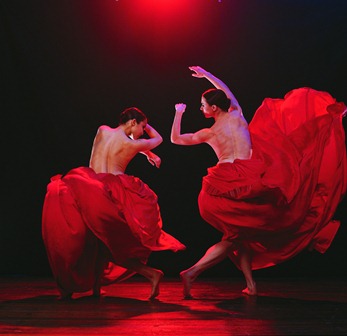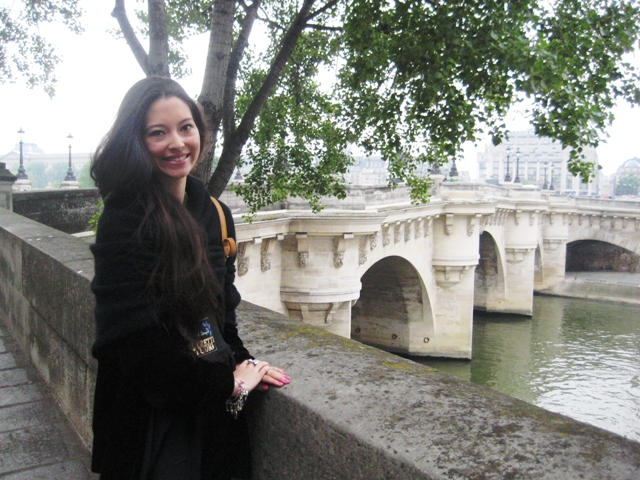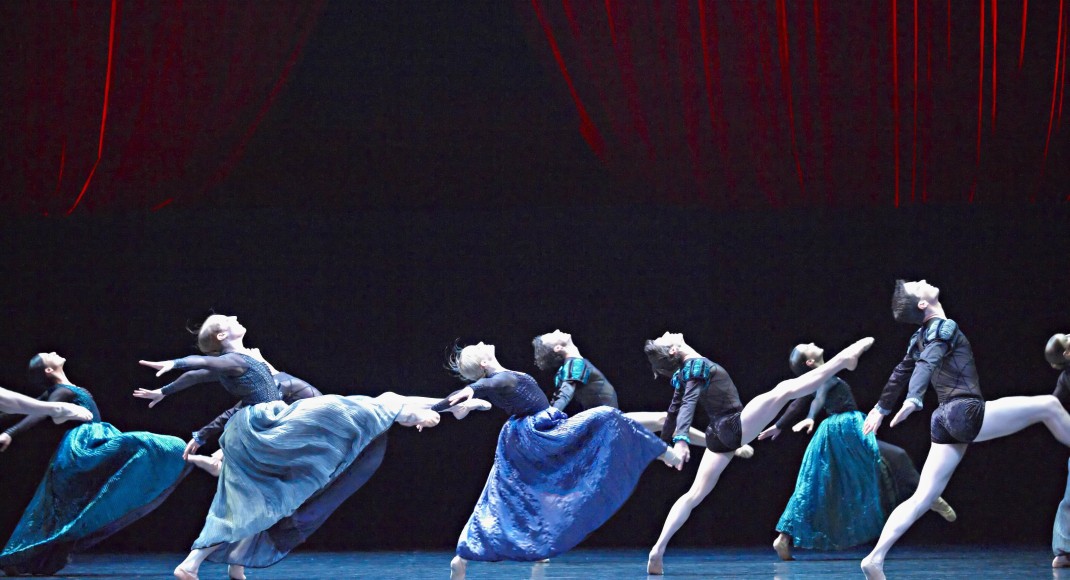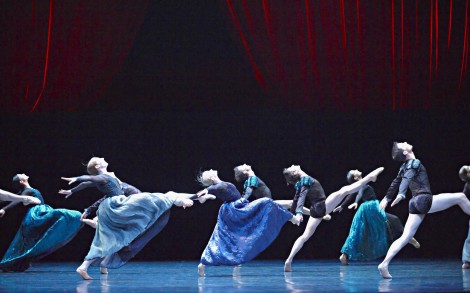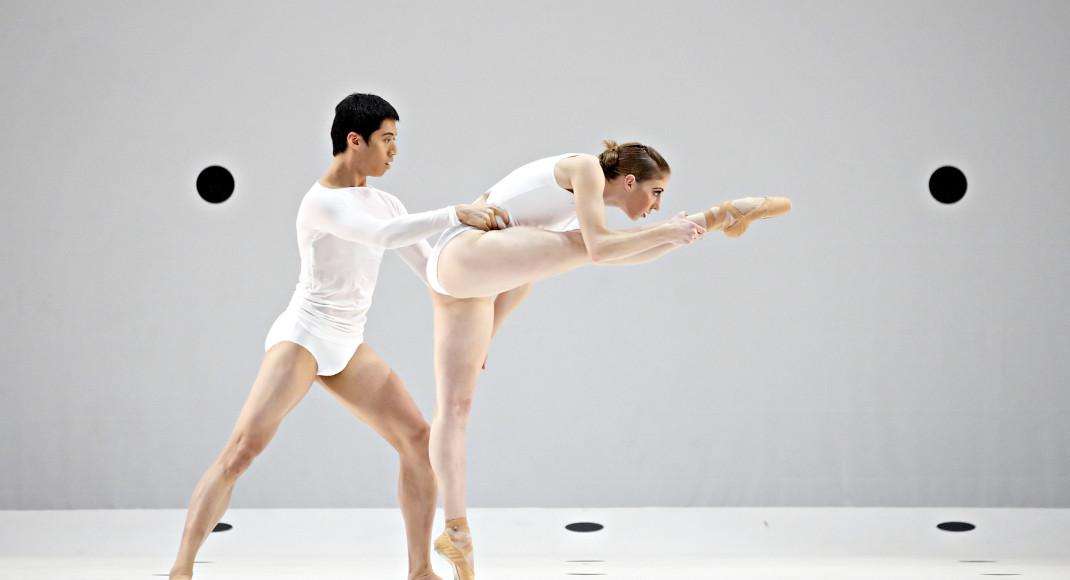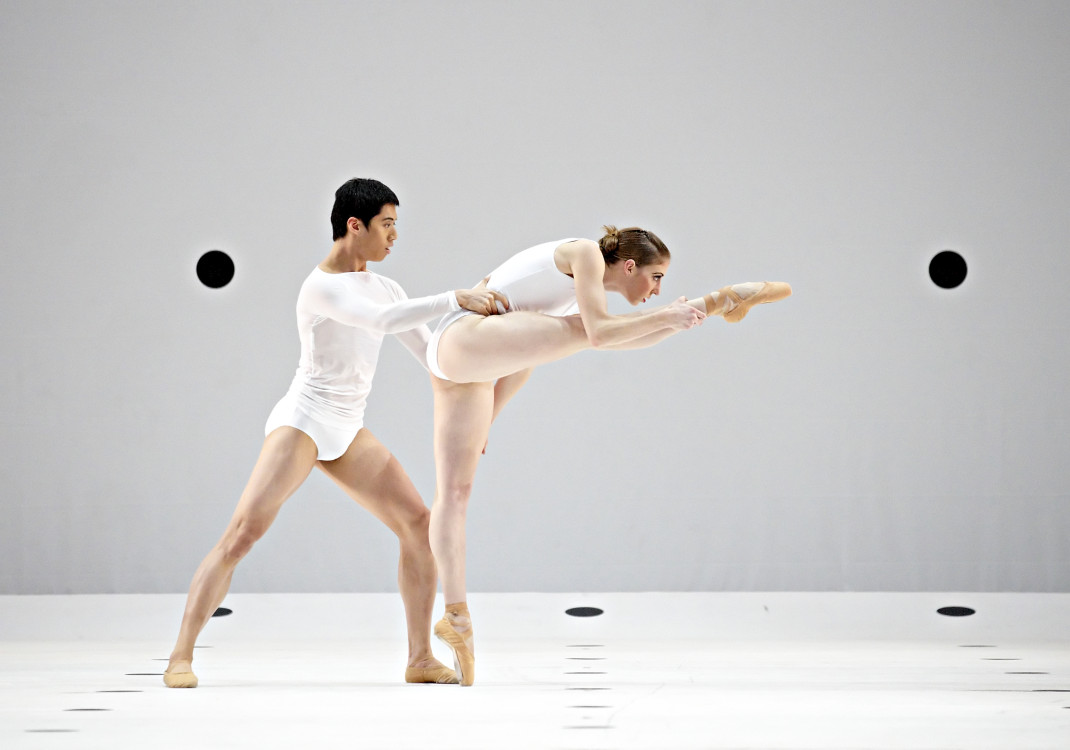12–13 November 2011, City Center, New York
New York City’s newly refurbished City Center theatre was the venue for American Ballet Theatre’s Fall season, a program of nine, one-act works by contemporary choreographers presented over a short period of a few days. Just three of those works, Alexei Ratmansky’s Seven Sonatas, Demis Volpi’s Private Light and The Garden of Villandry choreographed by Martha Clarke, Robby Barnett and Felix Blaska, were accompanied by live music. This music was played on stage in each case: a grand piano for Seven Sonatas, four guitars played alternately by one musician for Private Light and a piano trio for The Garden of Villandry. The remaining works were performed to taped music.
The highlight for me was Ratmansky’s Seven Sonatas, about which I have written separately. But I was also pleased to see Merce Cunningham’s Duets, originally made in 1980. In this work for six couples Cunningham’s inventiveness was patently clear, especially in the complex partnering that was an essential feature of the work. But there were also moments when his choreography showed its modernist qualities, movement stripped back to essentials with an emphasis on clear shapes filling the space around the body, and with a strong sense of focus and line, albeit often set off centre. There were jarring moments, however, when the dancers seemed unable to detach themselves from a balletic need to project emotion through the face and via bodily embellishments to the choreography. Paloma Herrera, for example, dancing the second duet with Eric Tamm looked a little too much like a swan queen at one stage as she nestled into her partner’s shoulder and wrapped an arm around him at hip level. As beautiful as she looked, it was not quite Cunningham.
Paul Taylor had two works in the season, the classic Company B, always enjoyable, and a new work choreographed in 2011 called Black Tuesday. This latter work, danced to songs from the era of the Great Depression, provided a great showcase for some of the company’s soloists. Misty Copeland for example danced with verve and panache from beginning to end and especially in a solo, ‘The boulevard of broken dreams’, while Gemma Bond gave a gutsy, crowd-pleasing performance in her solo ‘I went hunting and the big bad wolf was dead’. Santo Loquasto dressed the dancers for Black Tuesday in brown, black and grey outfits in 1930s style with an eye catching assortment of fabrics and patterns and a range of accessories: hats, caps, stockings, gaiters, suspenders and the like. While perhaps not world-shattering choreographically with its mix of musical comedy routines and 1930s jitterbug-style movements, it was a fun work, well structured and full of interest from start to finish.
Twyla Tharp had three works on the program. Sadly I missed Sinatra Suite on this occasion but caught two performances of In the Upper Room and one of a duet entitled Known by Heart (‘Junk’) Duet. In the Upper Room was something of a disappointment. I have seen it danced better in Australia and it was unfortunate that the first cast I saw seemed not to be able to last the distance let alone look as though they were dancing together in the same ballet. In the end the remarkable Herman Cornejo looked quite idiosyncratic without a strong backup from his colleagues.
The second performance was, however, distinguished by a spectacular performance from Paloma Herrera as the main pointe girl. She had such assertiveness, such control of those slow turns, and such powerful technique as she handled slides into splits followed by a lift from the floor into a fish dive pose, or when hurling her body through space to be caught in some astonishing position. Misty Copeland danced strongly as the third sneaker girl (a role I can’t help but identify with the former Australian Ballet dancer Katie Ripley). Sascha Radetsky, Blaine Hoven and Patrick Ogle showed how they had lasted the distance when they came on for their curtain calls and each reprised a step from the work.
Known by Heart was new to me. Dating to 1998 and danced to selections from Donald Knaack’s Junk Music, it was performed by an ebullient Gillian Murphy partnered by Blaine Hoven. Basically the work is a variation on the traditional format of the pas de deux with duet, variations and coda, and the scene was set with an explosive opening as a diagonal shaft of light highlighted a generous grand jete from Murphy, who was supported by a finger tip hold from Hoven. There followed a battery of fast paced movements. Murphy at times even seemed to be tap dancing on pointe. Both Murphy and Hoven stylishly carried off the mixed nature of the choreography—a bit of ballroom, a bit of musical comedy, a bit of classical while all the time maintaining a somewhat cheeky partnership.
The Garden of Villandry, a work made in 1979 was very pretty but was without a huge amount of depth, although it was beautifully expressive of the Schubert Trio No 1 in B Flat, Opus 99 to which it was danced. I admired the lilting movements of bodies and the intertwining of arms throughout. As a kind of Edwardian love triangle it was understated and lingeringly melancholic as two men vied for the attentions of one woman. It was given a pleasant performance by a lovely Veronika Part partnered by Roddy Doble and Gennadi Saveliev.
I was least impressed by the Volpi work, Private Light, especially the sections where the choreography seemed to be more classically oriented. Then the dancers seemed almost to be engaging in centre practice and centre practice with little choreographic interest. And there was a lot of lining up and breaking out of line, huddling together and kissing in the dark. Volpi seemed too to be unable to choreograph for the arms, which were often left hanging unimaginatively at the dancer’s side. But one dancer, Simone Messmer, stood out for her beautifully articulated body and her ability to use her chest to project emotion. It was a shame that the lighting was so dark that it was almost impossible to see her until the lights were raised for curtain calls. Perhaps the darkness was the source of the title?
It is always a pleasure to see a strong company performing a range of works that challenge the dancers stylistically. And is an equal pleasure to be challenged oneself by such a range of contemporary choreography as ABT presented in this short season.
Michelle Potter, 17 November 2011
